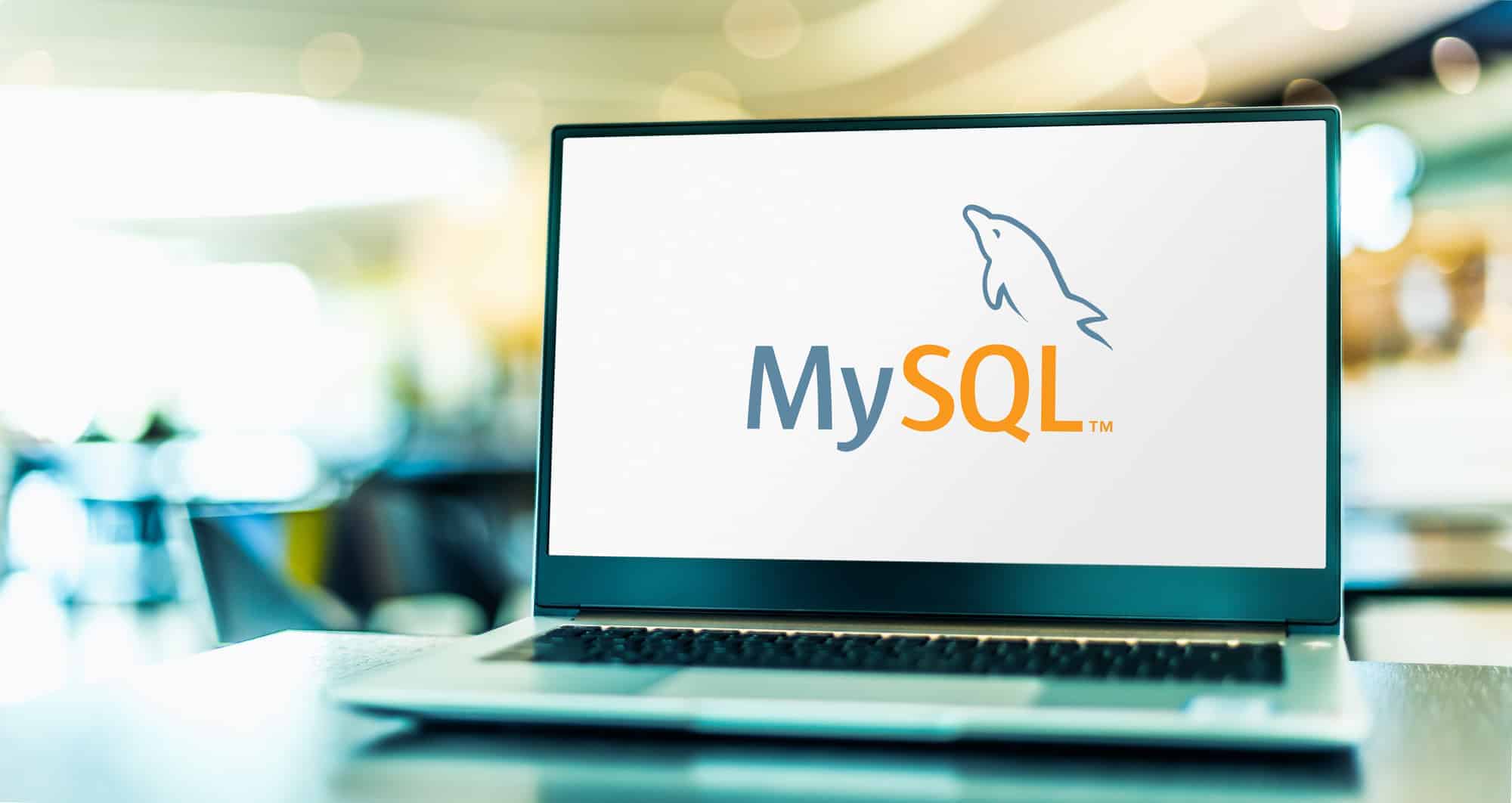MySQL, a name that resonates with anyone who’s delved into the world of databases, is more than just a tool; it’s the backbone of countless applications and websites we interact with daily. But what exactly is MySQL, and why has it become such a staple in database management? Let’s dive into its definition and history to understand its significance.
Defining MySQL: Beyond the Basics
At its core, MySQL is an open-source relational database management system (RDBMS). But to merely call it a “database system” is to oversimplify its capabilities. MySQL is where data gets stored, manipulated, and retrieved in a structured format, using the popular SQL (Structured Query Language). Its fame primarily stems from its flexibility, reliability, and ease of use.
A key feature of MySQL is its adaptability. It’s compatible with virtually all major hosting providers, and it integrates seamlessly with various programming languages, making it a go-to choice for web developers. Its open-source nature means a vast community continuously improves it, ensuring robustness and innovation.
Did you know that massive platforms like Facebook, Twitter, and YouTube rely on MySQL to manage their enormous databases? This widespread adoption by major tech giants is a testament to its efficiency and scalability.
The Evolution of MySQL: A Historical Perspective
Tracing back to its origins, MySQL was created in 1995 by Michael Widenius and David Axmark, a duo driven by the desire for a solution that was both efficient and free from the constraints of proprietary systems. What started as a personal endeavor quickly evolved into a global phenomenon.
MySQL’s journey is marked by significant milestones. For instance, in 2008, Sun Microsystems acquired MySQL AB, the company behind MySQL, for about $1 billion, underscoring its value in the tech world. Later, in 2010, Oracle Corporation, a key player in database systems, took over Sun, bringing MySQL under its large umbrella of software services.
Throughout its evolution, MySQL has maintained its ethos of being open-source, even under Oracle’s stewardship. This commitment has allowed a community of developers to contribute to its growth, leading to regular updates and advancements. In fact, according to a survey by Stack Overflow in 2019, MySQL was the second most popular database software among developers worldwide.
Introduction to MySQL
MySQL, a name that resonates with anyone who’s delved into the world of databases, is more than just a tool; it’s the backbone of countless applications and websites we interact with daily. But what exactly is MySQL, and why has it become such a staple in database management? Let’s dive into its definition and history to understand its significance.
MySQL in Action: How It Works

Ever wondered how MySQL manages to handle such large amounts of data efficiently? The secret lies in its client-server model, a framework that’s as ingenious as it is practical. Picture MySQL as a restaurant. The database is the kitchen, the heart of the operation, where all the magic happens. You, the user, are like a diner sitting at a table with a menu (the client). When you order a dish (or send a query), the waiter (the server) takes your request to the kitchen, where it’s prepared and served back to you. This model separates the user interface from the database server, allowing multiple clients to access the same database.
- Key Features:
- Multi-user Access: Multiple clients can send requests simultaneously.
- Security: The server can authenticate clients, ensuring secure access.
This model’s efficiency is evident in real-world applications. For example, a 2018 study by Redgate Software revealed that over 55% of surveyed companies used MySQL for various applications, citing its effective client-server model as a reason for its wide adoption.
Navigating the MySQL Architecture and Workflow
Delving into MySQL’s architecture is like exploring a well-organized library. At its core are databases, akin to different book sections, each holding tables (think bookshelves), which in turn contain the data (the books). Understanding this structure is crucial for efficient database management.
- The Workflow:
- Data Storage: Data is stored in tables, which are organized into rows and columns.
- Query Processing: When a query is sent, MySQL processes it using sophisticated algorithms to fetch or modify data.
MySQL’s Role in Modern Database Management
In the vast ocean of database systems, MySQL stands out as a popular choice. But how does it really compare to its peers like PostgreSQL, Oracle, and Microsoft SQL Server? Let’s put on our analytical hats and see.
- Ease of Use: MySQL is renowned for its user-friendliness. Beginners find it more approachable compared to Oracle, which caters to more advanced users with complex needs.
- Performance: When it comes to handling large-scale data, MySQL is a strong contender. However, Microsoft SQL Server is often preferred in enterprise environments for its robust data handling capabilities.
- Cost-Effectiveness: Being open-source, MySQL is a go-to for businesses seeking cost-effective solutions, unlike Oracle, which can be quite heavy on the pocket.
A 2020 report by Statista indicated that MySQL held a market share of around 16.2% in the database management system sector, highlighting its significant presence in the industry.
Case Studies: Successful MySQL Implementations
Nothing speaks louder than success stories. Let’s look at a couple of examples where MySQL made a real difference.
- Netflix: The entertainment giant uses MySQL to power its massive content database. With millions of users streaming daily, MySQL’s scalability and robustness are put to the test and it passes with flying colors.
- Uber: The ride-hailing service relies on MySQL for geographical data storage and processing. It’s a perfect showcase of MySQL’s capability to handle high-transaction environments efficiently.
Advantages of MySQL: Why It’s a Popular Choice
When it comes to database management systems, performance and reliability are not just buzzwords; they’re the bread and butter. So, what makes MySQL stand out in these arenas?
First off, MySQL’s speed is a game-changer. It’s designed for efficiency, ensuring that data retrieval and storage are lightning-fast. This is crucial for websites and applications where quick response times are essential for a good user experience. But it’s not just about speed; MySQL is also a champion of reliability. Its architecture ensures data integrity and supports robust backup and recovery capabilities, providing peace of mind for users and developers alike.
- Key Stats:
- Uptime: MySQL boasts high uptime percentages, crucial for businesses where downtime equals lost revenue.
- Scalability: Whether it’s a small startup or a large enterprise, MySQL scales to meet the growing data needs.
A study by the tech consulting firm, RedMonk, highlighted MySQL’s popularity, ranking it among the top three databases in 2021, primarily due to its performance and reliability.
MySQL’s Compatibility and Integration Capabilities
In the digital world, playing well with others is a superpower, and MySQL has it in spades. Its compatibility and integration capabilities are like a Swiss Army knife in a tech toolbox. Whether you’re using PHP, Java, Python, or any other popular programming language, MySQL integrates seamlessly. This compatibility is a huge advantage for developers who need a flexible and reliable database system that fits into diverse tech environments.
Moreover, MySQL supports various platforms, including Windows, Linux, and MacOS, ensuring that it’s accessible to a wide range of users. It also offers connectors and APIs for easy integration with other tools and systems, making it a versatile choice for different application requirements.
- Why It Matters:
- Cross-Platform Compatibility: Use MySQL on any operating system with the same efficiency.
- Integration with Languages and Tools: MySQL plays nicely with your favorite programming languages and software, simplifying the development process.
Understanding MySQL’s Open-Source Nature

Have you ever wondered what makes MySQL not just a database but a phenomenon? It’s its open-source nature. Imagine a world where software is built not by one, but by thousands of developers from around the globe. That’s the world of open-source software, and MySQL is a shining example of this collaborative spirit.
Being open-source means that anyone with the skills can contribute to MySQL’s development. This has led to a robust, innovative, and continuously evolving database system. It’s like having an army of developers constantly working to improve it, fixing bugs, adding features, and enhancing performance.
- Benefits of Open Source:
- Innovation: With contributions from diverse minds, MySQL is always at the forefront of new features and technologies.
- Security: More eyes on the code mean security vulnerabilities are spotted and fixed quickly.
A 2021 report from Gartner highlighted that open-source databases like MySQL are increasingly being adopted by enterprises, citing their flexibility and lower total cost of ownership as key reasons.
Contributing to the MySQL Community: How and Why
Joining the MySQL community isn’t just about taking; it’s about giving back too. But why contribute? For starters, it’s incredibly rewarding. You’re not just working on a project; you’re shaping the future of a tool that powers millions of applications worldwide.
- How to Contribute:
- Code Contributions: If you’re a developer, contribute code to improve MySQL’s functionality.
- Testing and Reporting Bugs: Help make MySQL more reliable by testing and reporting issues.
- Documentation: Assist in creating or updating MySQL documentation, making it more accessible to new users.
MySQL for Beginners and Experts: Learning Resources
Embarking on your MySQL journey? You’re in luck! The internet is brimming with resources to transform you from a MySQL newbie to a seasoned pro. But where to start?
For beginners, the MySQL website itself is a treasure trove. It offers a comprehensive tutorial section that covers the basics like installing MySQL, creating databases, and executing basic queries. As you progress, you’ll find these tutorials gradually introduce more advanced topics. Remember, the key is to start small and build your knowledge step by step.
- Why Tutorials Matter:
- Structured Learning: Tutorials provide a step-by-step learning path, making complex topics manageable.
- Self-Paced Learning: You can learn at your own pace, revisiting topics as needed.
In a 2022 survey conducted by Stack Overflow, over 60% of developers stated they prefer online tutorials for learning new technologies, highlighting their effectiveness.
Video Guides and Webinars: Interactive Learning Tools
If you’re the type who learns better by watching and listening, then video guides and webinars are your go-to tools. Platforms like YouTube have a plethora of channels dedicated to MySQL training, offering everything from short how-to videos to comprehensive course series.
Webinars, on the other hand, provide a more interactive learning experience. They are often hosted by experts and offer real-time Q&A sessions. Websites like Udemy and Coursera also offer full courses on MySQL, some of which are created by universities or tech companies.
- The Power of Interactive Learning:
- Visual and Auditory Engagement: Videos and webinars cater to different learning styles, making complex concepts easier to grasp.
- Real-Time Interaction: Live webinars allow you to ask questions and engage directly with experts.
MySQL vs. Other SQL Languages: A Comparative Analysis

When diving into the world of databases, one might wonder how MySQL stacks up against other SQL languages. Let’s break it down.
MySQL is known for its simplicity and ease of use, making it a favorite for beginners and small to medium-sized applications. On the other hand, languages like PostgreSQL offer advanced functionality and are often preferred for complex, enterprise-level applications. SQL Server, a product of Microsoft, integrates seamlessly with other Microsoft products, making it a go-to for businesses entrenched in the Microsoft ecosystem.
- MySQL vs. PostgreSQL:
- MySQL is more straightforward, ideal for web applications.
- PostgreSQL offers advanced features like complex queries and better compliance with SQL standards.
- MySQL vs. SQL Server:
- MySQL runs on various platforms, while SQL Server is primarily for Windows.
- SQL Server is known for better transactional support compared to MySQL.
A report by Database Engine Ranking highlights the popularity of these databases, with MySQL taking a significant share due to its user-friendliness and wide application.
Choosing the Right SQL Language for Your Project: MySQL’s Position
Selecting the right database language for your project can be a bit like picking the right tool for a job. It all boils down to the requirements of your project.
MySQL shines in scenarios that require a reliable, cost-effective solution with a broad community support. It’s great for web applications, e-commerce sites, and small to medium-sized enterprise applications.
However, if your project demands complex transactions, massive data handling, or specific compliance needs, you might lean towards PostgreSQL or SQL Server.
- Considerations for Choosing MySQL:
- Budget-Friendly: Ideal for projects with limited resources.
- Community Support: A vast community for troubleshooting and support.
In conclusion, while MySQL holds its ground as a versatile and user-friendly option, the choice of SQL language ultimately depends on the specific needs and scale of your project. Whether you go with MySQL or another variant, ensure it aligns with your project’s goals and requirements.
MySQL FAQs Uncovered
MySQL, while widely used, is often surrounded by misconceptions. Let’s clear the air and set the facts straight.
Misconception 1: MySQL is Only for Small Applications
- Reality: While MySQL is indeed popular for small to medium-sized applications, its scalability allows it to manage large-scale applications too. Companies like Facebook and Twitter use MySQL for certain functionalities, which speaks volumes about its capability.
Misconception 2: MySQL Isn’t Secure Enough for Enterprise Use
- Reality: MySQL offers robust security features including SSL support, encrypted connections, and comprehensive user privilege management. With proper configuration, MySQL is more than capable of meeting enterprise security standards.
Misconception 3: MySQL Doesn’t Support Important SQL Features
- Reality: MySQL supports a wide array of SQL features, including complex queries, transactions, and subselects. While it may not have every feature of some other SQL databases, it covers the vast majority of use cases.
Expert Answers to Frequently Asked MySQL Questions
Navigating the world of MySQL can sometimes be perplexing. Here are expert answers to some of the most common MySQL questions:
Q1: Is MySQL Suitable for Large Scale Applications?
- A: Absolutely! MySQL is designed to handle demanding applications. Its performance tuning, scalability features, and reliability make it suitable for large-scale deployments.
Q2: Can MySQL Handle Multiple Users Accessing It at the Same Time?
- A: Yes, MySQL can efficiently manage concurrent access. It uses advanced locking and concurrency mechanisms to ensure data integrity and performance even with multiple users.
Q3: How Does MySQL Compare to NoSQL Databases in Terms of Performance?
- A: MySQL and NoSQL databases like MongoDB serve different purposes. MySQL excels in structured data management and complex queries, while NoSQL is preferred for unstructured data and scalability. The choice depends on your specific data needs.
